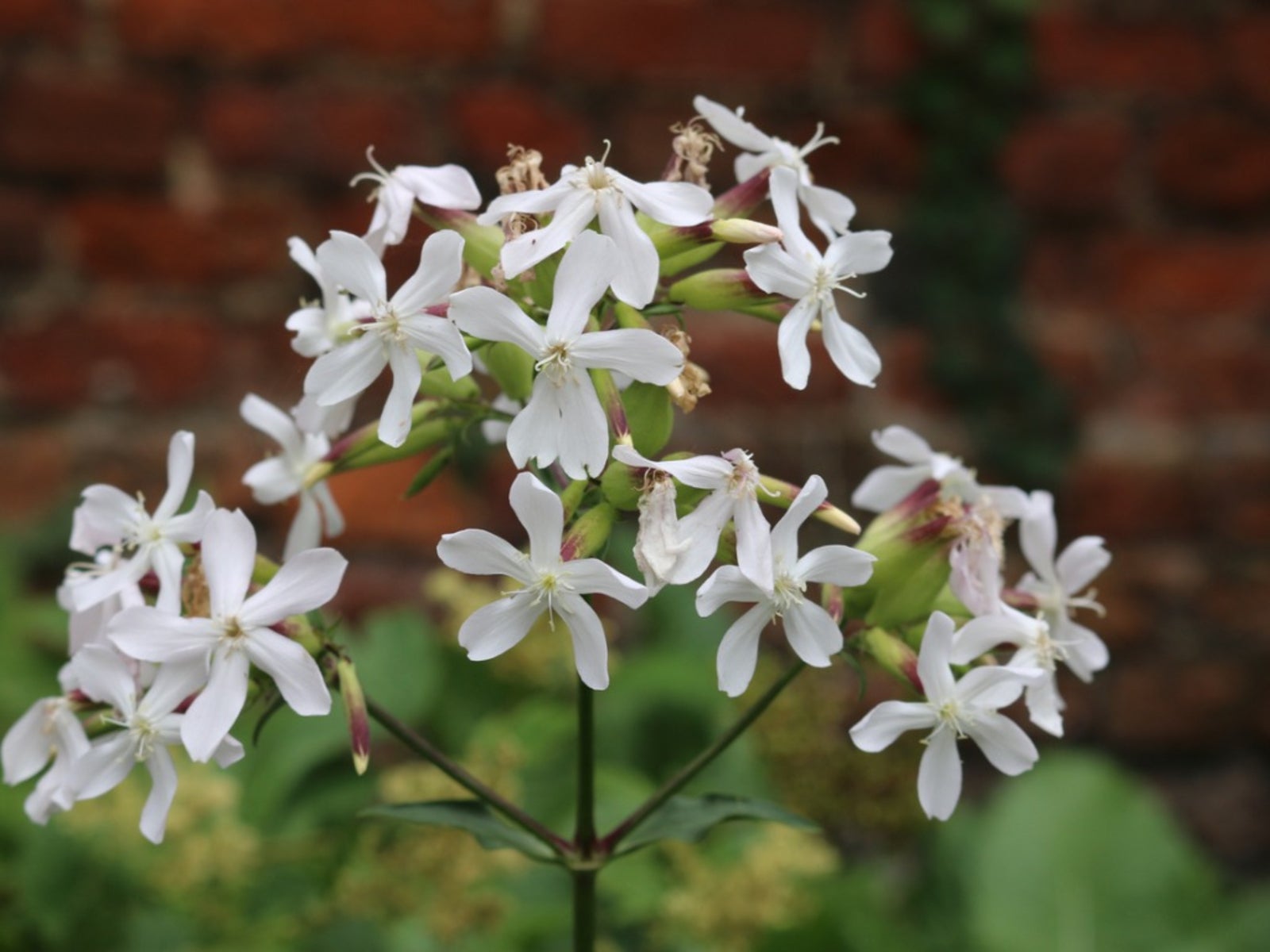Growing Soapwort: Tips For Soapwort Herb Care


Did you know there's a perennial plant called soapwort (Saponaria officinalis) that actually got its name from the fact that it can be made into soap? Also known as bouncing Bet (which was once a nickname for a washerwoman), this interesting herb is easy to grow in the garden.
The Perennial Plant Called Soapwort
Going back to the early settlers, soapwort plant was commonly grown and used as a detergent and soap. It can grow anywhere between 1 to 3 feet (30.5-91.5 cm.) high and since it self-sows readily, soapwort can be used as a groundcover in suitable areas. The plant typically grows in colonies, blooming from midsummer to fall. The flower clusters are pale pink to white and lightly scented. Butterflies are often attracted by them as well.
How to Grow Soapwort
Growing soapwort is easy, and the plant makes a good addition to empty beds, woodland edges, or rock gardens. Soapwort seeds can be started indoors in late winter with young transplants set out in the garden after the last frost in spring. Otherwise, they can be sown directly in the garden in spring. Germination takes about three weeks, give or take. Soapwort plants thrive in full sun to light shade and will tolerate nearly any soil type provided that it is well draining. Plants should be spaced at least a foot (30.5 cm.) apart.
Caring for Soapwort Groundcover
While it can withstand some neglect, it's always a good idea to keep the plant watered well during summer, especially in dry conditions. Deadheading can often bring about additional blooming. It's also necessary to keep soapwort from becoming too invasive, though keeping some blooms intact for self-seeding won't hurt anything. If desired, you can cut the plant back after blooming. It overwinters easily with a layer of mulch added, especially in cooler regions (hardy to USDA Plant Hardiness zone 3).
Homemade Soapwort Detergent
The saponin properties found in soapwort plant are responsible for creating the bubbles that produce soap. You can easily make your own liquid soap simply by taking about twelve leafy stems and adding them to a pint of water. This is usually boiled for about 30 minutes and then cooled and strained. Alternatively, you can start out with this small, easy recipe using only a cup of crushed, loosely packed soapwort leaves and 3 cups (710 ml.) of boiling water. Simmer for about 15 to 20 minutes on low heat. Allow to cool and then strain. Note: The soap only keeps for a short period (about a week) so use it right away. Use caution as this can cause skin irritation in some people.
Sign up for the Gardening Know How newsletter today and receive a free copy of our e-book "How to Grow Delicious Tomatoes".

Nikki Tilley has been gardening for nearly three decades. The former Senior Editor and Archivist of Gardening Know How, Nikki has also authored six gardening books.